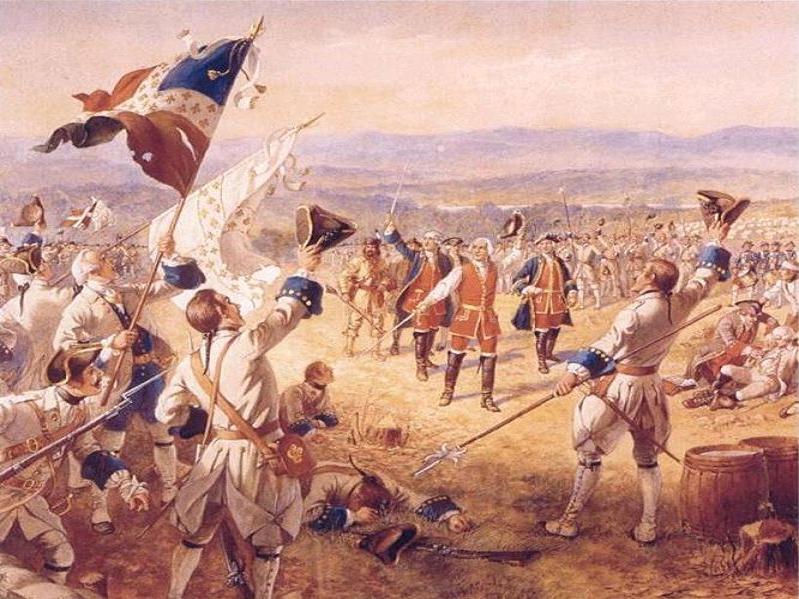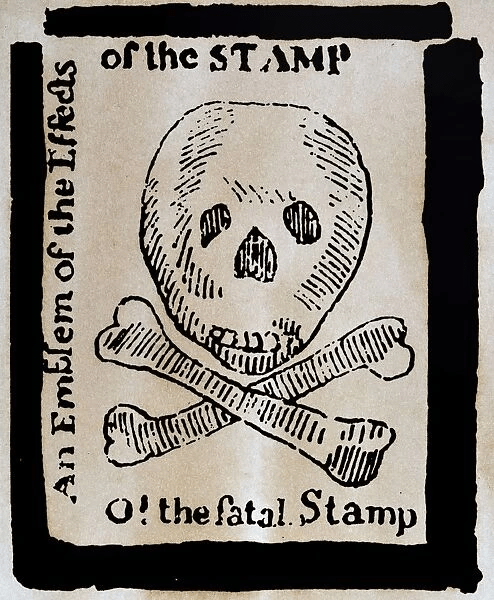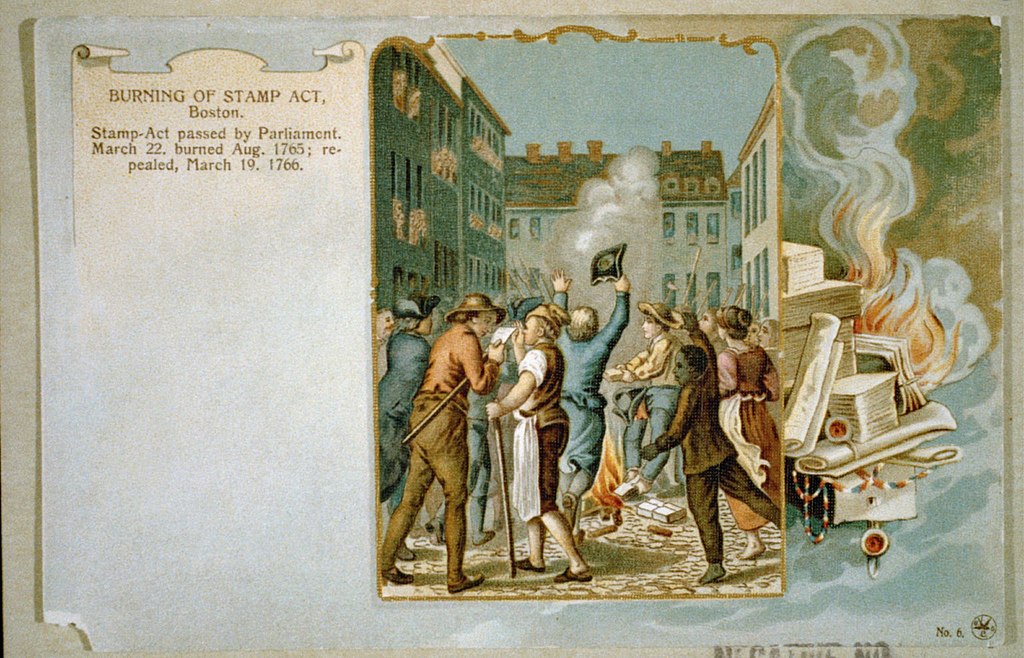Contents
Contents
The Stamp Act of 1765 was a law implemented in the Thirteen Colonies by the British government, which introduced a new tax payable on most printed media.
In this guide, we’ve explained what the Stamp Act did, why it was implemented, and how the colonists reacted to the new law.
Why the Stamp Act was implemented
In 1763, the French and Indian War ended. This was a war fought in America between Britain and France, with various Native American allies on both sides, for control of American overseas territories.

The British won the war, but the victory was expensive, due to the cost of supplying the British Army from across the Atlantic Ocean. As a result, at the end of the war, the country was in a significant amount of war debt.
To repay the debt, the British decided to raise taxes on their overseas colonies in America. The taxes were supposedly to help fund the continued presence of the British Army in the New World, so that the Thirteen Colonies could be continually protected.
In 1764, the British parliament passed the Sugar Act, introducing new taxes on sugar, and making it harder for smugglers to evade tax on molasses and other goods.
The colonists were upset by the Sugar Act, and it triggered small-scale boycotts of British-imported goods by traders in Boston. However, the law was mostly seen as a tightening of control to prevent tax evasion, rather than the implementation of widescale new taxes, and as a result, it did not attract significant resistance.
The extra revenue raised by the Sugar Act was not enough for the British, so on March 22 1765, they implemented the Stamp Act.
What the Stamp Act did
The Stamp Act effectively made it a legal requirement to use British-made paper, which had a high tax associated, for nearly all printed media produced in the Thirteen Colonies.
It covered newspapers, books, pamphlets (commonly used to spread news and political arguments at the time), playing cards, legal documents, wills, and educational diplomas, among other printed media.
Printed material had to have a special revenue stamp attached, to signify that the tax had been paid. Otherwise, people could face fines or even imprisonment in extreme cases.
Reaction to the Stamp Act
The Stamp Act of 1765 caused widespread outrage in the colonies.
The new tax came at a time when most of the Thirteen Colonies were in an economic depression, at the end of the French and Indian War.
However, in most cases, Stamp Act taxes were not extremely large. The size of the tax was not the colonists’ biggest issue – it was the fact that they had no say in the implementation of the tax.
The American colonies had no representation in British parliament. This meant that in return for the tax they paid, they had no say in how the money would be spent. The colonists also had no control over the amount of tax they were paying – the taxes were not put in place by their elected representatives.
Patriot politicians argued that taxing people without their consent was illegal under British common law, and that the British government’s actions were tyrannical.
Public protests against the Stamp Act began almost immediately, with the colonists adopting the slogan “no taxation without representation”.

Merchants in the Thirteen Colonies also organized widespread boycotts of British goods in response to the Stamp Act, to try and hurt the British financially.
In October 1765, colonial politicians met in New York for the Stamp Act Congress, to discuss how they should respond to British overreach.
The congressmen produced “The Declaration of Rights and Grievances”, a petition stating that the colonists had the same rights as Englishmen – notably the right to political representation in return for taxes paid. The petition also declared that only the colonial assemblies had the legal authority to implement new taxes.
Repeal of the Stamp Act
In the United Kingdom, there were different arguments about the future of the Stamp Act. Some wanted to keep it in place to maintain their perceived control over the colonies, and thought that repealing it would show weakness, and encourage future resistance to any new laws. Others wanted an end to the protests and trade boycotts, in large part because they would hurt the British economy in the long run.
On March 18 1766, the British government repealed the Stamp Act.
Once news reached the Thirteen Colonies, there were widespread celebrations. Many considered this an important victory, and some believed that it would mark the end of British efforts to implement unjust taxes in the colonies, at least without offering political representation.

However, this was not the end of British tyranny in America. The day the Stamp Act was repealed, the British parliament passed the Declaratory Act, which reaffirmed that the British had complete authority to pass any laws they wanted in the Thirteen Colonies – a signal of future taxes and other regulations to come.
Did the Stamp Act lead to the American Revolution?
The Stamp Act marked a significant escalation in colonial-British tension, in the decade leading up to the American Revolution.
While the taxes did not cause the war directly, they marked the point where large-scale resistance against British authority began in the Thirteen Colonies.
The Stamp Act also marked the first direct tax implemented by the British in America, beginning a string of other attempts to raise revenue, such as the Townshend Acts of 1767.
Facts about the Stamp Act
- Under the Stamp Act, different types of printed items had a different amount of tax associated. The highest taxes were attached to documents used by professionals, such as lawyer licenses and college degrees, to try and limit the growth of the professional classes in the colonies.
- Stamp Act paper that the colonists had to use was produced in London, England.
- Even after the Stamp Act was introduced, most people in the colonies were still loyal to the British monarchy. “The Declaration of Rights and Grievances” affirmed the delegates’ continued respect for the British King George III in its appeals for fairer taxation policy. When the Stamp Act was repealed, the king received widespread praise.
- The phrase “No taxation without representation” was popularized in response to the Stamp Act, and continued to be used as a political slogan in response to other taxes implemented by the British in the leadup to the American Revolution.
- The Stamp Act led to the formation of the Sons of Liberty – the Patriot rebel group later responsible for organizing the Boston Tea Party.


